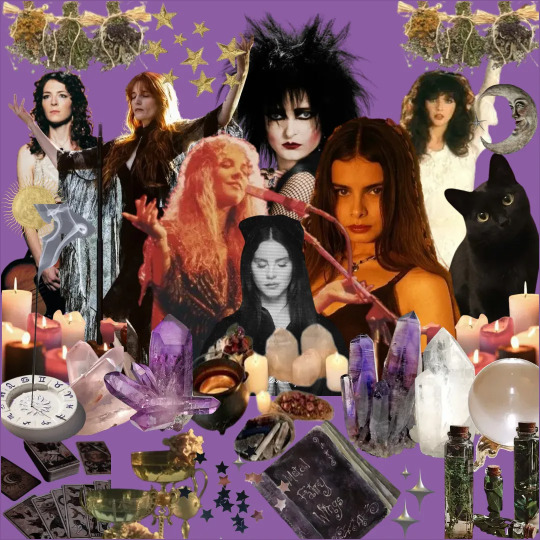Text

The wand usually consists of a twig as long as the distance between the crook of the elbow and the tip of the index finger. The material used is usually obtained from trees such as apple, elder, hazel, and oak, but in other cases alternative materials such as metals, horns, or crystals are used. The wand can later be decorated with carvings and the addition of ribbons, crystals, feathers, shells, or any other natural element to add specific features to the tool.
In some practices the use of the wand is replaced by the presence of a Stang, a staff, shoulder height in length, with a fork at the top. The wand or staff is a ritual object used since ancient times as a symbol of power. It represents the connection between heaven and earth and is often seen as a phallic symbol of power.
In ancient times the staff was used in pastoral cultures as a tool for control, defense, and guidance of the flock, later it became a symbol of royal and religious power and guidance through the instrument of the scepter.
Some examples of the wand or staff are the Etruscan Lituus, a staff used by Etruscan Augurs to mark out a ritual space, delineate the boundaries of territories and channel divine power.
In Dionysian worship we find the Thyrsus or Fennel Staff, a staff topped with a pinecone and covered with fronds used during rituals to symbolize phallic and divine power.
Another example is the Caduceus, related to the cult of Hermes and the Rod of Asclepius, both of which are represented by a staff surrounded by a serpent-like figure that recalls transmutative and regenerative power.
The symbolism of wands and staffs are strictly connected with guidance, protection and wisdom and for those reasons it’s still used in magical rituals.
#witchcraft#witchblr#witches of tumblr#wand#magical tools#magic basics#ritual#esoterism#paganism#stang#babywitch#thyrsus#caduceus#rod of asclepius#strega#italianwitch
11 notes
·
View notes
Text

If somebody ask me what my female version of the roman empire is:
The Tudor period🌹⚔️👑
✨Obsessed by it since i was 12✨
#tudor history#the tudors#tudor era#elizabeth tudor#mary tudor#anne boleyn#catherine of aragon#jane seymour#anne de cleves#katherine howard#catherine parr#king henry viii#six wives of henry viii#jane grey#hampton court#the tower of london#history
3 notes
·
View notes
Text

Blessed spring equinox🌱🌷
#witchcraft#witchblr#witches of tumblr#pagan witch#wheel of the year#ostara#spring equinox#hello spring#springiscoming#springcore#paganism#italianwitch#strega#spring
15 notes
·
View notes
Text
Dream house💜

#magic#witch aesthetic#witchcore#witchcraft#witch vibes#witchy#witchy aesthetic#witchy vibes#purple aesthetic#whimsigothic aesthetic#whimsycore#whimsigoth#witch#witchblr#violet aesthetic
27 notes
·
View notes
Text
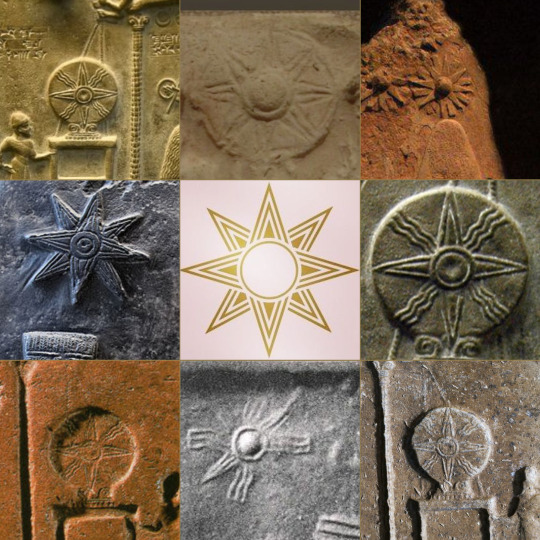
The star of Ishtar
The Octagram symbol is a star ideogram that commonly appears in ancient Babylonian iconography. The eight-pointed star is usually associated with ancient goddesses such as Ishtar, Innana, Isis and Venus. These goddesses were all seen as protectress of love, fertility, beauty, divine law and power.
The symbol was originally seen as a representation of the seven heavens ruled by the goddess and later became a representation of the planet Venus associated with fertility goddesses. The planet is the third brightest object in Earth's sky after the Sun and the Moon and in the past, it was referred to as the morning or evening star. In the Old Babylonian period, the planet Venus was known as Ninsi'anna translates to "divine lady, illumination of heaven".
In many myths, Inanna’s descend into the netherworld and return to the heavens may correspond with the movements of the planet Venus in the sky, setting in the West and then rising again in the East.
The discontinuous movements of Venus relate to both to the myth as well as Inanna's dual nature. Other theories recognize the story of Inanna's descent into the underworld as a reference to an astronomical phenomenon associated with retrograde Venus.
The symbol refers to the cosmic power of the goddess as ruler of sky and heavens and connected with the transcendental world. Her power stands in the mystery of magic and creation of the universe itself and for this reason the octagram became a powerful sigil used in antiquity as a devotional iconography connected with the goddess worshippers.
#witchcraft#witchblr#paganism#witches of tumblr#pagan witch#inanna#ishtar#octagram#venus#sacred symbols#symbolism#esoteric#sumerian#occultism#italianwitch#strega
39 notes
·
View notes
Text

Since ancient times, keys have been used as a symbol of power, and many deities and figures of the past are depicted as key bearers.
The most famous of these figures is the goddess Hecate, represented as Kleidouchos, guardian of the keys. Hecate, along with other deities such as Hermes, Turms Vant, Carunt, Isis, and Hathor is a deity related to liminal spaces, portals, mysteries, and transformation.
The keys thus represent the power of access to the unconscious, knowledge, magic, mystery, eternal life or other worlds.
Keys also hark back to the sexual mysteries of creation and symbolizing the ability to open, close and pass often used during rituals.
#witchcraft#witchblr#witches of tumblr#keys#magical tools#traditional witchcraft#occultism#esoteric#symbols#paganism#pagan witch#italianwitch#strega
27 notes
·
View notes
Text
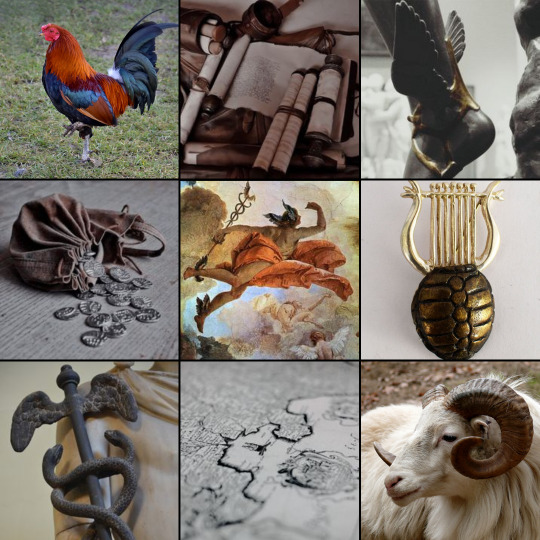
HERMES
Hear me Hermes, the messenger son of Maia!
Who has the heart that rules all, protector of games, ruler of mortals,
benevolent, wily one, guide, slayer of Árgos.
Of winged shoes, friend of mankind, prophet of the word for mortals,
Who delights in gyms and cunning deceptions.
Interpreter of all things, to merchants you procure gains, dissolve worries.
Who holds in your hands the perfect weapon of peace.
Coricius, blessed, swift, skilled rhetorician,
protector in works, friend to mortals in needs,
terrible weapon in tongue, reverence for mankind.
Hear me praying, granting a good fulfillment of life in works,
in graces of speech and memories.
Κλῦθί μευ, Ἑρμεία, Διὸς ἄγγελε, Μαιάδος υἱέ,
παγκρατὲς ἦτορ ἔχων, ἐναγώνιε, κοίρανε θνητῶν,
εὔφρων, ποικιλόβουλε, διάκτορος, Ἀργειφόντα,
πτηνοπέδιλε, φίλανδρε, λόγου θνητοῖσι προφῆτα·
γυμνάσιν ὃς χαίρεις, δολίαις τ’ ἀπάταις, (στρ)οφιοῦχε·
ἑρμηνεῦ πάντων, κερδέμπορε, λυσιμέριμνε·
ὃς χείρεσσιν ἔχεις εἰρήνης ὅπλον ἀμεμφές·
Κωρυκιῶτα, μάκαρ, ἐριούνιε, ποικιλόμυθε,
ἐργασίαις ἐπαρωγέ, φίλε θνητοῖς ἐν ἀνάγκαις·
γλώσσης δεινὸν ὅπλον, τὸ σεβάσμιον ἀνθρώποισιν·
κλῦθί μευ εὐχομένου, βιότου τέλος ἐσθλὸν ὀπάζων,
ἐργασίῃσι, λόγου χάρισιν, καὶ μνημοσύνῃσιν.
#witchcraft#witchblr#paganism#witches of tumblr#hermes#pagan witch#hellenic polytheism#orphic hymns#hellenic devotion#hellenic deities#hellenic devotees#italianwitch#strega#hellenic gods#hellenic pagan
379 notes
·
View notes
Text
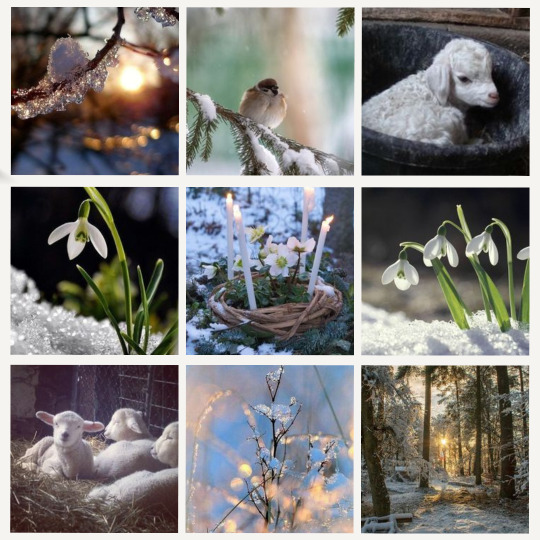
Blessed Imbolc🕯️
#witchcraft#witchblr#paganism#witches of tumblr#wheel of the year#Imbloc#Witches Sabbath#Winter#Spring#pagan witch#italianwitch#strega#wintercore#springiscoming
10 notes
·
View notes
Text
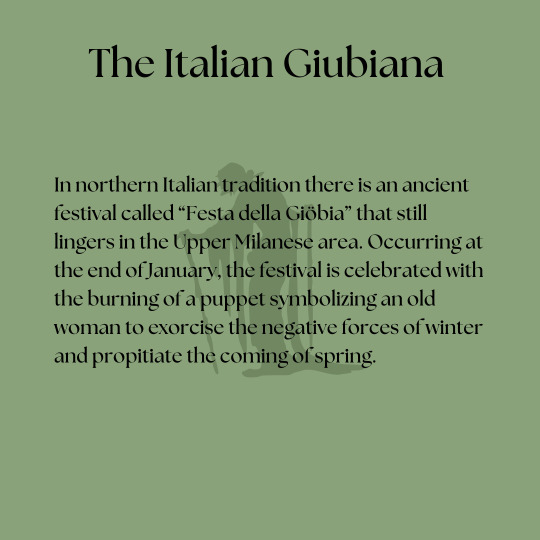
According to the folktale, the Giubiana was an old witch, thin, with very long legs and red stockings. She lived in the woods and because of her long legs, she never set foot on the ground, but moved from tree to tree. On the last Thursday of January, she used to go in search of some children to eat. One mother, to protect her child, decided to set a trap for her. She prepared a large pot full of yellow (saffron) risotto with luganega (sausage) and put it on the windowsill. The Giubiana attracted by the smell, came out of the woods, and began to eat all the contents of the huge pot. The risotto was so good that the ravenous Giubiana did not notice the time passing. She did not notice that the sun, which kills witches, was now about to rise. By the time the Giubiana finished all the risotto, the first ray of sunshine had come out: the Giubiana was thus pulverized by the sunlight, and from that day all the children were saved. To remember that event at the end of January, risotto with luganega is prepared and the puppet in the guise of the old witch is burned.
The name "Giubiana" seems related to the Roman god Jupiter, but other possible reference figures are Juno, Janus, and Diana.
In the medieval centuries the popular narrative created a variety of legends and numerous folk tales, in which Giubiana thus became a female figure alluding to the Great Mother, sometimes an old woman, sometimes a witch, a variant of the Befana, to be symbolically driven away along with the rigors of winter. The most distinguishing element of the festival is the great bonfire, which even today is perceived by all as a symbol of renewal and a new year's restart.
#witchcraft#witchblr#italianwitch#italian folklore#strega#giubiana#italian traditions#paganism#witches of tumblr#winter spirit#italian witchcraft#pagan witch#great godess#old witch#bonfire#renewal#italian tales#northern italy
30 notes
·
View notes
Text

The origin was connected to a set of pagan propitiatory rites according to which the twelfth night after the winter solstice was celebrated the death and rebirth of nature through Mother Nature. The Romans believed that on these twelve nights, female figures flew over cultivated fields to propitiate the fertility of future crops, hence the myth of the "flying" figure. According to some, this female figure was first identified with Diana, while according to others she was associated with a lesser deity called Sàtia (goddess of satiety), or Abùndia (goddess of abundance).
Another hypothesis would link Befana with an ancient Roman festival, which was always held in winter, in honor of Janus and Strenia and during which gifts were exchanged.
According to other interpretations it would recall a female personification of winter represented as a hunched old woman with a hooked nose, disheveled white hair and abnormal feet, dressed in rags and broken shoes.
Some similar figures are Perchta, Bertha, Berchta, Holda or "Frau Holle" and Baba Jaga.
#witchcraft#witchblr#witches of tumblr#italianwitch#strega#italian folklore#befana#italian traditions#italian witchcraft#paganism#pagan witch#winter spirit#witch#folklore#epiphany
11 notes
·
View notes
Text
I started practicing almost 18 years ago. I was just a kid and my Mum initiated me to her little coven. I now practice as a solitary witch but still look to my mum's advices when needed.🌝
This is the second one because the first wasn't long enough. Sorry, I made this one much larger to better accommodate everyone.
If you feel comfortable share how you started or what got you interested.
#witchcraft#traditional witches#italianwitch#strega#witchblr#witches of tumblr#witch#polls#tumblr polls#a little bit about me
7 notes
·
View notes
Text
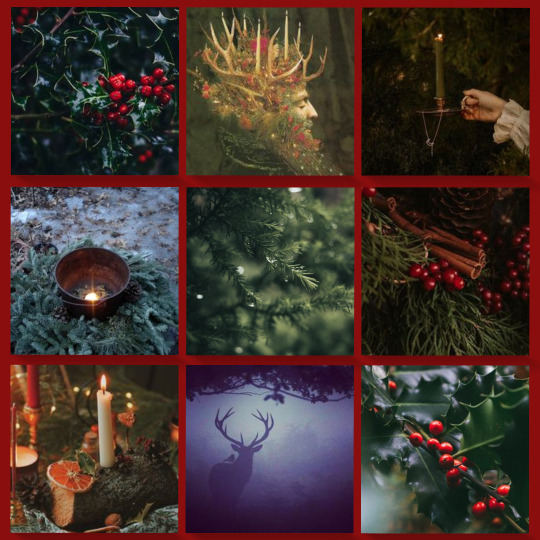
Blessed Winter Solstice!🕯️
#witchcraft#witchblr#witches of tumblr#paganism#pagan witch#yule#winter solstice#yuletide#wheel of the year#witches sabbath#holly king#horned god#darkest night#wintercore#strega#italianwitch
147 notes
·
View notes
Text
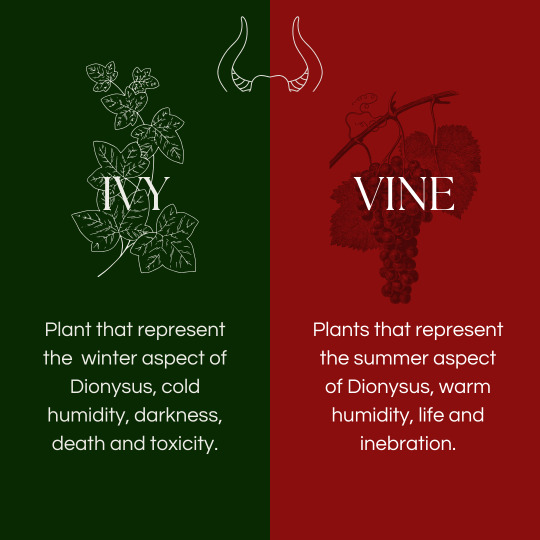
Many are the faces of the Hellenic God Dionysus, but the duality of his nature is sometimes connected with two specific plants associated to the god. Dionysus relates to many plants such as Fig, Oak, Pine, Vine and Ivy, these two are specifically connected with two opposite faces of the god.
Grapevine starts its annual growth cycle in spring with bud break. During spring and summer, the plant grows and after flowering the vine sets the fruits that are usually harvested in early autumn. Following the first frost the leaves begin to fall as the vine starts to enter its winter dormancy period. The following spring, the cycle begins again. Following the same annual cycle Dionysus is seen as a god that is reborn every spring, bringing during the hot season prosperity and abundance before disappearing in winter. Grapevine grows thanks to the hot weather and humidity and so it represents the warm fertilizing humidity power of the god. Grape is used to create wine which is the drink sacred to Dionysus because of its ability to release mental faculties.
Ivy on the other hand, blossoms in the autumn when the vines are harvested and bears fruit in the spring. As an evergreen plant, ivy needs cold weather and humidity to grow and flower. Ivy vines crawl as snakes and in the myth, ivy appeared soon after the birth of Dionysus to shelter the child from the flames that burned the mother's body. To its freshness was attributed the virtue of dispelling the ardor of wine, so Dionysus was believed to have commanded his worshippers to crown themselves with it. Ivy, in contrast to the vine that bore fruit bearing vitality and exaltation, produced a poison that sterilized and had medicinal virtues that were refreshingly depurative and narcotic. The plant is also connected with thunder and lightning and was believed to have the power to protect from lightning and cure sore throat and cough.
Thus these two plants sacred to Dionysus are contrasted with each other in an eloquent contrast: the vine, drunk with light, is a child of heat and returns the rays of the sun by warming, with its libation, bodies and souls, while the ivy shows itself to be cold in nature; indeed the sterility and uselessness of its first sprouts recall night and death.
Their affinity is rooted in the very essence of the dual-figured god, whose nature is expressed from the earth by means of them: light and darkness, warmth and coldness, intoxication of life and breath of death that withers everything; the multiplicity of the Dionysian aspects struggling with each other and yet conjoined with each other is manifested here in vegetal form, stands in struggle with itself and prodigiously transitions from one form into the other.
Dionysus rules over all moist and hot creatures whose symbol would also be wine, as a hot and moist substance. In wine, heat is made ardor drink of fire that overwhelms everything, that ignites the soul and the body. But the moist heat is contrasted with the moist cold that as a Dionysian element, is manifested in ivy, a plant that greens even in winter when the Dionysian festivals take place.
#witchcraft#witchblr#witches of tumblr#paganism#pagan witch#hellenism#hellenic polytheism#dionysus#ivy#grapevine#darkness and light#mythology#duality#herbalism#italianwitch#strega
297 notes
·
View notes
Text
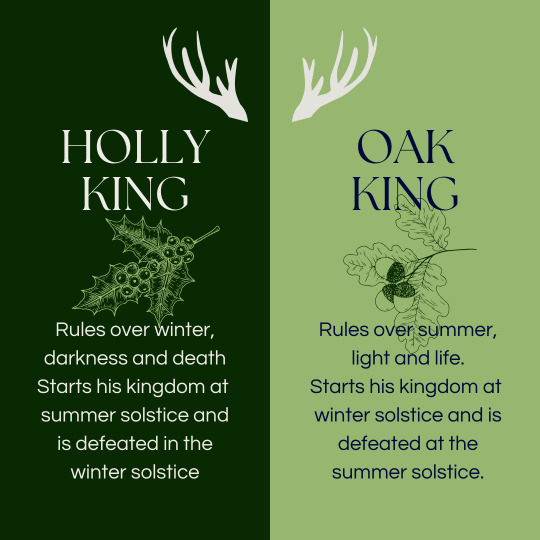
In neopaganism the horned god is seen with two different faces representing the duality of nature and the changing of seasonal cycle. The theory of these two aspects of the god was debated by Sir James George Frazer in The Golden Bough and by Robert Graves in The White Goddess.
According to these theories old religions were fertility cults that revolved around the worship and periodic sacrifice of a sacred king. Frazer based his thesis on the pre-Roman priest-king Rex Nemorensis who was ritually murdered by his successor. The king was the incarnation of a dying and reviving god, a solar deity who underwent a mystic marriage to a goddess of the Earth. He died at the harvest and was reincarnated in the spring. This legend of rebirth is central to almost all of the world's mythologies. Some examples of this archetypical figure are the gods Dionysus, Osiris, Tammuz, Dumuzi, Adonis, Janus, Attis.
The two aspects of this figure take the names of Holly and Oak king.
The Holly King is seen as an old version of the green man, ruler of winter, death and darkness. He starts his kingdom at summer solstice when, after the longest day, ruled by his opposite king the oak king, the days start to get darker and shorter entering in the dark half of the year. The holly king is so called referring to the plant that is fruitful during the winter season. The holly king is also referred to as a black knight and is also connected with the dark aspects of many pagan gods.
Counterpart of the Holly King is the Oak King that is usually seen as a young green man, ruler of summer, life and light. He starts his kingdom at the winter solstice, when after the darkest night a new light is reborn, signing the beginning of the light half of the year. The oak king is called over the name of the plant that is fruitful during the hot season. Opposite to the Holly King, the Oak King, relates to the light aspect of many pagan gods and its sometimes referred to as a white knight.
According to the theory these two kings may be seen as two brothers fighting for the throne or as a father and son passing the kingdom to each other in a perpetual cycle of death and rebirth. This cycle of life and death represents the seasonal cycle of death and rebirth of the sunlight and vegetative world.
#witchcraft#witchblr#witches of tumblr#paganism#pagan witch#oak king holly king#horned god#green man#winter solstice#yule#the golden bough#wheel of the year#darkness and light#winter#strega#italianwitch
214 notes
·
View notes
Text

I don't know what it is, but something is definitely happening.
A month ago i started seen 19:19 almost every day then it started to happen either with all the other numbers. This happens to me almost every day, sometimes even more than once and never on purpose.
#witchcraft#witchblr#witches of tumblr#synchronicity#spirit messages#numerology#angel numbers#strega#italianwitch#my pics
2 notes
·
View notes
Text

I have two moods 💋
#lana del rey#courtney love#kinderwhore#kinderwhore aesthetic#coquette aesthetic#coquette#dollette#dollette aesthetic#soft grunge#sad girl#bad girl#riot grrrl#american whore#music#hole band
0 notes
